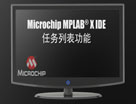IDE, EIDE, UDMA or ATA. And ATAPI
IDE (Integrated Drive Electronics); EIDE (Enhanced Integrated Drive Electronics); UDMA (Ultra Direct Memory Access); ATA (Advanced Technology Attachment); ATAPI (ATA Packet Interface)The IDE interface is closely related to the ISA interface - one of the general-purpose interfaces that can be found on the PC's motherboard along with the PCI interface slots. In fact, IDE is the part of ISA needed to support various internal devices, such as disk drives, CD-ROMs, internal Zip drives, etc. which is redirected and turned into the different connector to save on the use of larger ISA slot. The only way to connect external device will be via the PC card (former PCMCIA card).
ATA was the standard bus interface on the original IBM AT computer and is also called IDE, for Integrated Drive Electronics, and Ultra DMA, for Direct Memory Access. ATA is the official ANSI (American National Standards Institute) standard term. Most motherboards include two ATA 40-pin connectors each capable of supporting 2 devices (one master and one slave). Typically, the master should be at the end of the 40-pin ribbon cable, and the drives which are similar in speed should be attached to the same IDE connector.
Being the least expensive hard drive interface ATA is, in general, slower than SCSI interface, and is used for single user PCs and low-end RAID systems.
Maximum data transfer rates (MB/sec)
Maximum number of supported devices
Maximum bus width (bits)
16.6
2
16
33
2
16
66
2
16
The above table shows that there has been a significant progress in IDE/ATA technology development. The newest ATA-66 drives rival (as ATA-33 did before) SCSI drives while being much simpler to install and use and are cheaper. To perform at their best they require special adapter card, but they are backward compatible and will work at at least 16 MB/sec. The same table also shows that there are too many different names used by the industry for the same drives. The ATA / IDE female cable connector is shown in the next picture.
!-----------------------------! ! 1 oooooooooooooooooooo 39 ! ! 2 oooooooooooooooooooo 40 ! !-----------------------------!
There are two data transfer methods used in ATA/IDE: PIO (Processor Input / Output) and DMA (Direct Memory Access). PIO has modes 0,1,2,3, and 4, where higher number corresponds to the higher data transfer rate. DMA comes in a single-word and a multi-word (in general, faster) version, and up to three DMA modes (higher number again means higher data rates).
ATAPI (ATA Packet Interface) defines a set of commands supported in ATA. It allows connection of CD-ROMs and other drives to the same EIDE connector.













評(píng)論